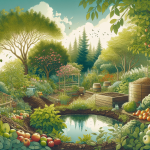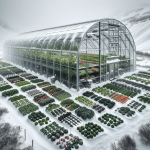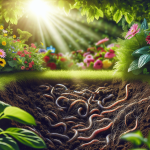This post may contain affiliate links. As an Amazon Associate, we may earn commissions from qualifying purchases.
Welcome to a delightful journey where you’ll discover how to create microclimates in your garden, enhancing your growing seasons and safeguarding those delicate plants that need a little extra care. In “Creating Microclimates In Gardens To Extend Growing Seasons And Protect Sensitive Plants,” you’ll learn simple yet effective techniques to manipulate your garden environment, allowing you to cultivate a thriving oasis all year round. With these strategies, your garden will not only survive but flourish, leading to a lush, vibrant landscape whatever the weather. Have you ever wished you could extend your garden’s growing season or better protect your delicate plants from unexpected weather swings? Perfect timing because we’re about to dive into a fascinating gardening practice that helps you do just that—creating microclimates! With a bit of knowledge and some practical tips, you’ll be able to carve out small, climate-controlled zones in your garden that can make a world of difference.
What is a Microclimate?
Microclimates are localized areas within a larger climate zone that have distinct temperature, humidity, wind, and light conditions. By manipulating these factors, you can create favorable environments for your plants. This means that even if you live in a region with harsh winters or intense summers, you can still nurture a diverse array of plants by creating mini-environments suited to their needs.
Why Create Microclimates?
Creating microclimates allows you to:
- Extend the Growing Season: Grow plants beyond their typical growing seasons, giving you more time to enjoy fresh produce or flowers.
- Protect Sensitive Plants: Shield delicate plants from harsh weather conditions, ensuring they thrive.
- Increase Garden Diversity: Grow a wider variety of plants that wouldn’t normally survive in your region.
Factors Influencing Microclimates
There are several factors you need to consider when creating a microclimate in your garden. Let’s break down the main ones:
Sunlight
Different plants require varying levels of sunlight to thrive. Knowing the sun’s path and how it shifts through the seasons is essential for positioning plants correctly.
Wind
Wind can cool down plants and dry them out. Knowing how the wind flows through your garden can help you place barriers like hedges or walls to create a more sheltered microclimate.
Temperature
Temperature variances can be mitigated through several methods, such as using mulch to insulate the soil or cold frames to trap heat.
Moisture
Soil moisture and air humidity are critical elements for plant health. Consider using drip irrigation or mulching to maintain consistent moisture levels.
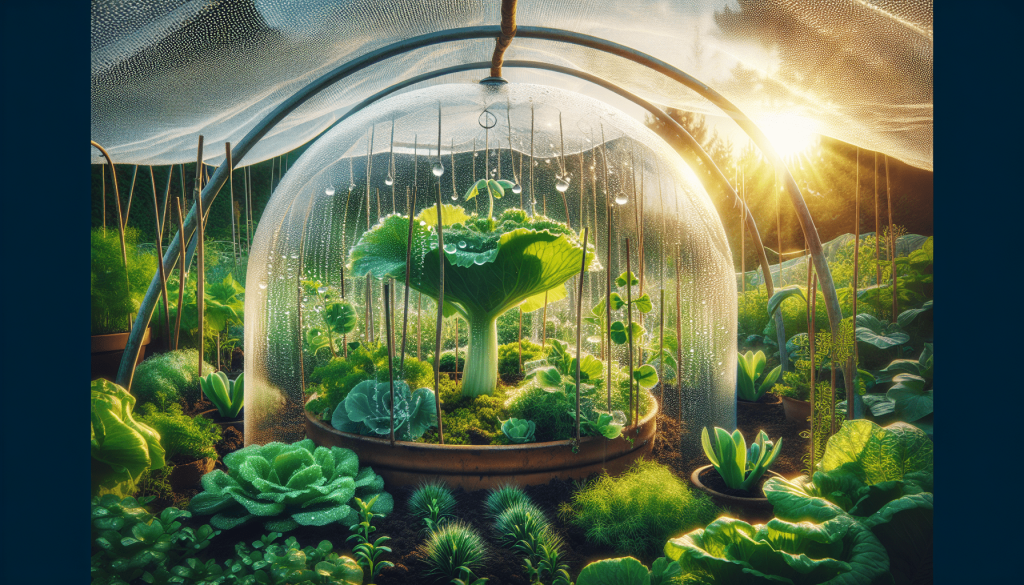
How to Create a Microclimate
Creating a microclimate involves manipulating one or several factors to make a more hospitable environment for your plants. Here’s how you can go about it:
Select the Right Site
Choose an area in your garden with the potential to be modified according to the needs of the plants you wish to grow.
| Criteria | Details |
|---|---|
| Sunlight Availability | Make note of areas with full sun, partial shade, and full shade. |
| Wind Patterns | Observe wind direction and strength to decide on barriers. |
| Water Access | Ensure proximity to a water source for easy irrigation. |
| Natural Features | Use existing features like walls and trees to your advantage. |
Add Physical Barriers
Physical barriers can help control wind, temperature, and even light levels. Here are some examples:
- Fences and Walls: These can protect against wind while absorbing heat during the day and releasing it at night.
- Hedges and Shrubs: These natural options can act as windbreaks and provide partial shade.
Use Mulch and Ground Covers
Mulch and ground covers help regulate soil temperature and moisture levels. Organic mulches like straw and wood chips decompose to add nutrients to the soil.
Implement Water Solutions
Water management is crucial for creating a microclimate. Drip irrigation systems can deliver water directly to plant roots, minimizing evaporation and ensuring consistent moisture levels.
Utilize Garden Structures
Various structures can be employed to create microclimates:
- Cold Frames and Cloches: These mini-greenhouses can extend your growing season by providing extra warmth.
- Shade Cloths: Useful for protecting plants from excessive sunlight and heat.
Types of Microclimates
There are several types of microclimates you might aim to create in your garden:
Warm Microclimates
These microclimates are ideal for plants that require warmer conditions. You can create a warm microclimate by:
- Choosing a south-facing slope.
- Using dark-colored mulches that absorb heat.
- Installing heat-retaining walls or stones.
Cool Microclimates
Ideal for plants that prefer cooler conditions. Here’s how to create one:
- Choosing a north-facing slope.
- Using light-colored mulch to reflect sunlight.
- Planting near water features, which can cool the surrounding air.
Humid Microclimates
Useful for plants that need higher moisture levels. You can achieve this by:
- Installing a misting system.
- Planting close to water features.
- Using dense plantings to trap humidity.
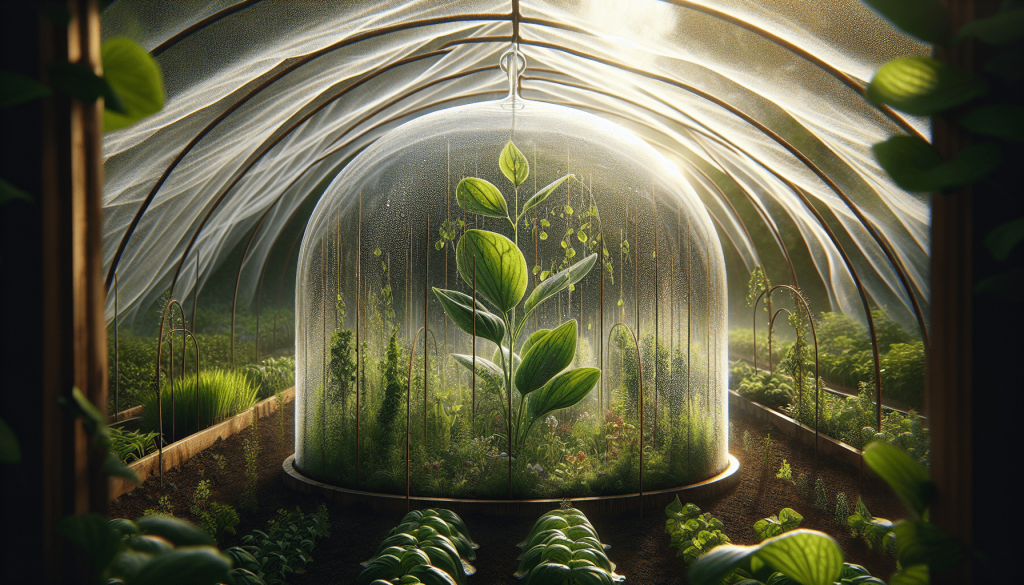
Examples of Microclimate Applications
To better understand the concept, let’s look at specific scenarios where microclimates can be beneficial:
Growing Tropical Plants in Temperate Zones
Tropical plants like bananas, citrus, and mangoes typically can’t survive in temperate zones due to colder winters. However, you can create a warm microclimate that mimics tropical conditions by:
- Building a south-facing wall.
- Planting in large pots that can be moved indoors during extreme cold.
- Using thermal mass materials like rocks to store and radiate heat.
Extending the Growing Season for Vegetables
Many vegetables, such as tomatoes and peppers, can benefit from an extended growing season. You can do this by:
- Using cloches or cold frames as early as the start of spring and late into the fall.
- Employing row covers to trap heat and protect from frost.
- Adding ample organic mulch to keep the soil warm.
Protecting Sensitive Perennials
Plants like ferns and hostas, which are prone to damage from harsh sun and wind, can benefit from microclimates. You can:
- Plant them under taller trees that provide partial shade.
- Use windbreaks like hedges to shield them from strong winds.
- Apply a thick layer of organic mulch to maintain soil moisture.
Common Challenges and Solutions
Creating microclimates isn’t without its challenges. Here are some common issues you may face and how to solve them:
Overheating
In an attempt to create warmth, you might accidentally overheat your plants. To prevent this:
- Use ventilated cloches or cold frames.
- Monitor soil temperature with a thermometer.
- Employ shading techniques during peak heat.
Poor Air Circulation
Dense plantings and barriers can sometimes lead to stagnant air and increased disease risk. Solution:
- Space plants correctly to allow for airflow.
- Utilize oscillating fans in enclosed spaces like greenhouses.
Water Management
Maintaining the right moisture level can be tricky. Overhead watering might lead to inconsistent moisture levels. Solution:
- Opt for drip irrigation to provide consistent moisture.
- Mulch heavily to conserve soil moisture.
Advanced Techniques for Microclimates
For those who want to take it a step further, here are some advanced techniques:
Solar Reflective Materials
Using materials that reflect light and heat can maximize sunlight and warmth in specific areas. Mylar sheets and reflective paints can be particularly effective.
Heat Sinks
Incorporating heat sinks such as water barrels or stone structures can moderate temperature fluctuations. These elements absorb heat during the day and release it slowly over the night.
Geothermal Greenhouses
For those willing to invest more, geothermal greenhouses can provide a year-round growing environment. They use the steady underground temperatures to keep the air within the greenhouse at an optimal level.
Microclimate Maintenance
Maintaining a microclimate involves periodic adjustments and care:
Regular Monitoring
Check the temperature, humidity, and soil moisture levels regularly. Make adjustments as needed to maintain optimal conditions.
Seasonal Adjustments
Be prepared to alter structures and coverings as the seasons change. What works in winter might not be suitable for summer.
Plant Rotation
Consider rotating your plants to avoid nutrient depletion and reduce the risk of disease. Different plants have different nutrient needs; rotating them helps maintain soil health.
Final Thoughts
Creating microclimates in your garden is not just about extending the growing season or protecting sensitive plants; it’s also about understanding your garden better and making the most out of it. Whether you’re a seasoned gardener or a beginner, these techniques can help you cultivate a more productive and diverse garden.
So, take a look around your garden and start thinking about how you can tweak your space to create those perfect little niches. Your plants will thank you, and you’ll enjoy a longer, more fruitful growing season. Happy gardening!

